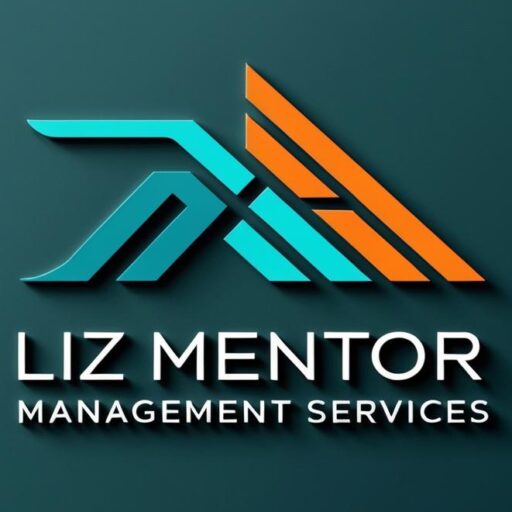Skills Planning on a Shoestring: How Small Teams Can Develop People Without Breaking the Bank
If you run a small business, you might think that skills development is a luxury reserved for large companies with deep pockets. After all, fancy training programs, accredited workshops, and corporate learning budgets are often portrayed as the gold standard. The reality, though, is that the most impactful training in small teams rarely happens in a classroom. It happens in the flow of work — in real-time problem-solving, during tight deadlines, and through everyday collaboration.
You don’t need a massive budget or a dedicated HR department to grow a capable, resilient team. What you need is intention, a plan, and the discipline to track what’s already happening. Even when resources are limited, skills planning on a shoestring can transform your team’s capabilities, drive business performance, and make your Workplace Skills Plan (WSP) and Annual Training Report (ATR) genuinely meaningful.
This guide is for small business owners, managers, and SDFs who want to maximize learning opportunities without stretching budgets. By the end, you’ll understand how to identify real development needs, deliver practical training, and capture it effectively for reporting — all while keeping your team engaged and growing.
Why Skills Planning Matters, Even on a Tight Budget
Let’s get one thing straight: skills planning isn’t just a compliance requirement or a line item for SETA reports. Done right, it’s a strategic lever for your business. Small teams benefit even more because every skill gap is magnified. If someone struggles with a process, it doesn’t just affect their work; it ripples across the team, affecting morale, customer satisfaction, and operational efficiency.
A well-thought-out plan helps you focus on what truly matters. It clarifies where your business is underperforming, highlights which skills will drive growth, and ensures that even informal learning contributes to measurable improvement. It turns chaos into clarity, and guesswork into actionable development. Plus, when you do submit your WSP or ATR, your documentation isn’t just accurate; it’s compelling because it reflects real, business-aligned learning.
Common Barriers Small Teams Face
Small business owners often tell themselves, “We can’t train — we don’t have the budget, HR, or time.” These are understandable but misleading obstacles. In reality, many small teams are already training without realizing it. Shadowing, quick demos, mentoring, and on-the-job problem-solving all count as skills development. The challenge isn’t access to training; it’s recognizing, structuring, and tracking it.
Some common excuses include:
“Formal training is too expensive.”
“We don’t have an HR person to manage it.”
“There’s no time for workshops.”
“If we can’t do it perfectly, why do it at all?”
While these may feel like barriers, the truth is that you’re already investing in skills every day — you just need to formalize it so it works for your business and SETA compliance.
Low-Budget, High-Impact Skills Development Strategies
Even with minimal resources, you can create high-impact training that genuinely improves performance. Small teams have an advantage here: training can be immediate, contextual, and tailored to the team’s needs. Here’s how.
Cross-Training and Job Shadowing
Rotating responsibilities or shadowing colleagues is one of the easiest ways to develop multiple skills without spending a cent. When employees learn each other’s roles, it builds flexibility, reduces single points of failure, and spreads knowledge across the team.
For example, your administrative assistant might spend a few hours learning basic invoicing from the bookkeeper. This doesn’t just improve coverage when someone is absent; it develops confidence and competence in a new skill.
To make it count for reporting, note the date, the skills covered, and a short feedback reflection from both parties. This documentation is often sufficient for your ATR submission and gives your team a tangible sense of growth.
Micro-Learning Moments
Long workshops or multi-day courses aren’t always necessary. Sometimes, a 10-minute learning burst can be more effective. Short, focused sessions on a single skill allow employees to apply what they’ve learned immediately and retain it better.
For instance, a quick session could cover how to label stock correctly for dispatch or send client follow-up emails professionally. You can use video tutorials, brief internal demonstrations, or voice notes. Documenting participation with a simple note, WhatsApp screenshot, or email record ensures that this micro-learning counts toward your formal reporting.
Mentorship and Coaching
Even informal mentorship programs can have a profound impact. Pairing a junior employee with a more experienced colleague creates structured learning relationships without the need for external trainers.
Imagine your sales assistant is struggling to handle client objections. Pairing them with the sales manager for a weekly coaching session helps them develop confidence, learn practical techniques, and apply them immediately. By keeping a mentorship log or sign-off sheet, you can document outcomes for the ATR while creating genuine skill growth.
Building a Learning Library
A self-service learning library is another cost-effective approach. Collect resources like PDFs, recorded process walkthroughs, YouTube tutorials, or internal guides. Employees can access these materials at their own pace, reducing reliance on formal sessions.
Encourage staff to review resources and submit a reflection or summary. This practice serves two purposes: it reinforces learning and provides evidence for your ATR. Over time, your library becomes a living resource that grows with your team’s needs.
Internal Lunch & Learn Sessions
These sessions turn your team into trainers. Pick a topic, let someone lead a short discussion, and invite questions. Topics can range from basic Excel skills, customer complaint handling, fire safety, to new software introductions.
Documenting attendance and feedback from these sessions demonstrates ongoing development, even if no external funding is involved. Over time, this encourages a culture of peer-led learning, where knowledge sharing becomes a natural part of your workflow.
Leveraging SETA-Aligned Opportunities
Even on a shoestring budget, SETAs often provide free or subsidized training opportunities, including webinars, learnerships, and industry-specific courses. The key is to align internal learning efforts with what’s already offered, maximizing your team’s exposure to new skills while meeting compliance requirements.
Checking your SETA portal or newsletter regularly ensures you don’t miss opportunities. When paired with your internal initiatives, these programs enhance both skills growth and reporting credibility.
Planning Skills Development Without Spending Hours
You don’t need a complex strategy to plan effectively. Start by focusing on the intersection of business priorities and team capabilities. Identify three to five critical business goals, then ask which skills are required to achieve them.
For instance, if your goals include reducing errors, improving customer service, or streamlining stock management, consider the specific skills that will drive those outcomes: process knowledge, digital literacy, communication, or time management. Look internally first — who on your team can teach, demonstrate, or document these skills? What resources already exist online that can supplement learning?
Planning from what’s available keeps your approach realistic and actionable while ensuring it aligns with business needs.
Tracking Learning So You Can Report It
Even informal learning counts if it’s documented. A basic tracking sheet can record the date, topic, employees involved, facilitator, and evidence. Evidence might include an email, photo, note, or reflection.
Consistent documentation transforms everyday learning into a credible skills development program that supports your WSP and ATR. Small teams that take this approach often submit more compelling reports than larger companies, simply because they tracked their efforts carefully and intentionally.
Real-World Wins: Small Teams Can Excel
Many SDFs in five-person teams have submitted ATRs that outperform companies with hundreds of staff. How? They focus on three principles:
Track internal efforts consistently
Plan based on actual business needs
Document learning outcomes clearly
The result isn’t just a better compliance record — it’s a stronger, more capable team, and a business that grows intentionally without stretching resources.
Final Thoughts: Make Skills Planning Work for You
You don’t need a formal training line item in your budget to develop your team effectively. The key is to recognize, structure, and track the learning already happening. Small, repeatable habits — from micro-learning and job shadowing to internal workshops and mentorship — create significant impact over time.
Skills planning on a shoestring isn’t about cutting corners; it’s about using what you have wisely. When done intentionally, even the smallest team can build a learning culture, improve performance, and submit ATRs that reflect real development.
Smart, simple skills planning is what separates ticking boxes for compliance from genuinely building a team that drives business growth.



